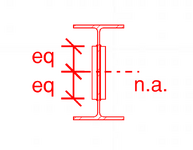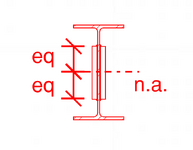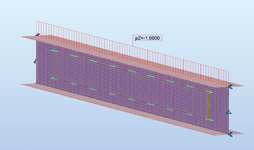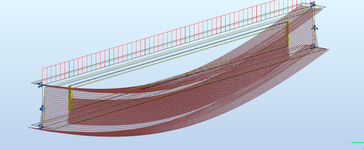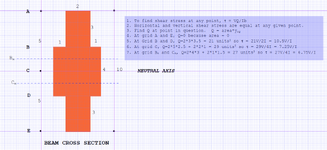XR250, Yeah, that looks like the first edition, all I can find online as to traces is an arabic translation from 1981, so probably. Abebooks normally has this information but not for this book. Yeah, I know, not the question being asked, but....
Fundamentally this is a built-up shape.
Since Koot is absent, since we are kind of presuming this reinforcement is for bending, there's a shear flow into and out of the element (top and bottom) of the side plate. Q is determined on the height of the element, so at the top of the added plate and the bottom of the added plate. For normal bending this should produce the same shear flow requirement. If it isn't adequately welded to transfer the shear flow, the element won't absorb any stress or provide any benefit. The welding spacing (if intermittent) should also be checked to ensure the plate doesn't buckle (in bending) between the welds, but for normal welds and plates this probably won't control.
Anybody looking for a better understanding of Q, or actual shear in beams versus how we simplify the design via a simplified check, should look at ... (hang on.... Steel Structures, Design and Behaviour, Wang and Salmon, third edition, or
later. Section 7.7 Shear on Rolled Beams.
Sorry I haven't read the five pages of discussion, so if somebody already referenced this, I'm being repetitive.
